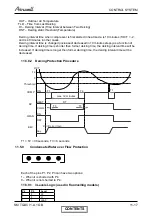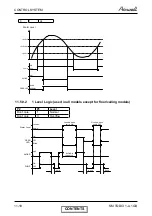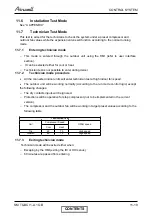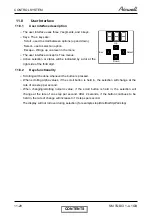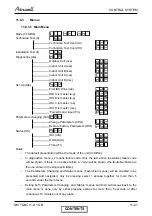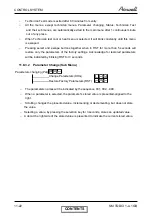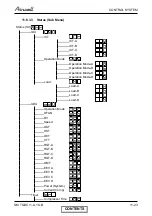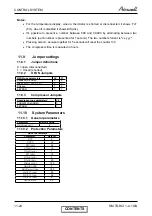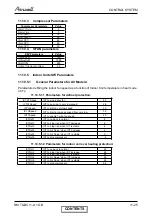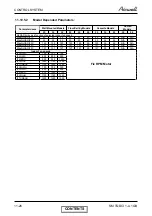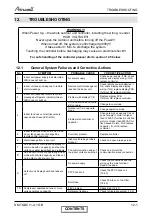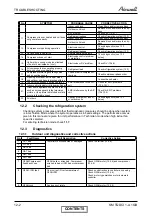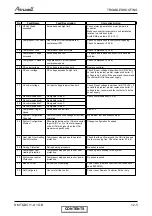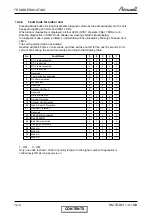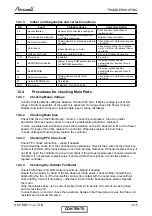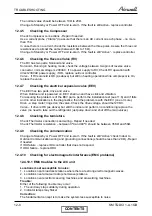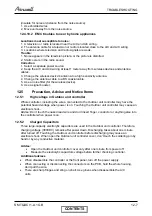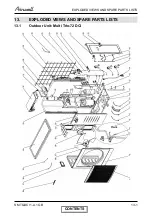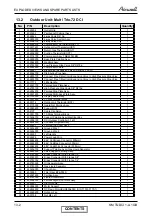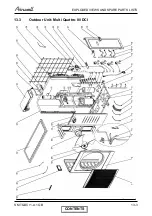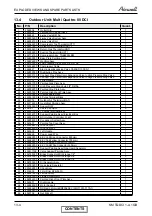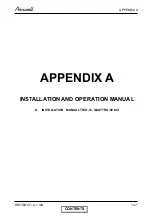
12-5
TROUBLESHOOTING
SM TQDCI 1-A.1 GB
12.3.3
Indoor unit diagnostics and corrective actions
No.
Fault
Probable Cause
Corrective Action
1-4
Sensor failures
Sensors not connected or damaged
Check sensor connections or
replace sensor
7
Communication mismatch
Indoor and Outdoor controllers are
with different versions
Replace Indoor controller
8
No Communication
Communication or grounding wiring is
not good
Check Indoor to Outdoor wiring and
grounding
9
No Encoder
Indoor electronics or motor
Check motor wiring, if ok, replace
motor, if still not ok, replace Indoor
controller.
11
Outdoor Unit Fault
Outdoor controller problem
Switch to Outdoor diagnostics.
17-21
Protections
Indication No
action
24
EEPROM Not Updated
System is using ROM parameters and
not EEPROM parameters
No action, unless special
parameters are required for unit
operation.
25
Bad EEPROM
No action, unless special
parameters are required for unit
operation.
26
Bad Communication
Communication quality is low
reliability
Check Indoor to Outdoor wiring and
grounding
27
Using EEPROM data
No problem
28-31
IDU model
Indication : DCI-25,35,50,60
12.4
Procedures for checking Main Parts
12.4.1 Checking
Mains
Voltage
Confirm that the Mains voltage is between 198 and 264 VAC. If Mains voltage is out of this
range, abnormal operation of the system is expected. If in range check the Power (Circuit)
Breaker and look for broken or loosed cable lugs or wiring mistake(s).
12.4.2 Checking
Main
fuse
Check 20A fuse on the Filter Board - If burnt – check the compressor, fan or any other
peripheral that can cause a short. In case of a problematic peripheral - replace it.
In case no problematic peripheral, check the resistance on the DC bank (B+ & B- on the Power
board), if it is less than 30
, replace the controller. Otherwise replace the burnt fuse.
In case of frequent burning fuse, replace the controller.
12.4.3
Checking PFC Chock coil
Check PFC chock connection – repair if needed.
Dis-connect the chock from the controller wire extensions, check if the 2 wires of the chock are
shorted. If shorted (OK) check between each wire and the metal box. If shorted replace chock, if
not (OK), open the controller top cover and check if the wire extensions are connected well and
if shorted. If not shorted, replace wires, if shorted (OK) than might be a controller problem –
replace controller.
12.4.4
Checking the Outdoor Fan Motor
Check FAN-Power and FAN-Halls connections - Repair if needed.
Rotate the fan slowly by hand. If the fan does not rotate easily, check whether something is
obstructing the fan, or if the fan itself is coming into contact with the outer case, preventing it
from rotating. Correct if necessary - otherwise, the fan motor bearings have seized. Replace
the motor.
If the fan rotates easily, use a current probe (“Clamp”) to assure AC current on each phase
and it is less than 1A.
In case there is no current, check the resistance between the three poles. Assure the three coil
resistances are almost the same.
CONTENTS

